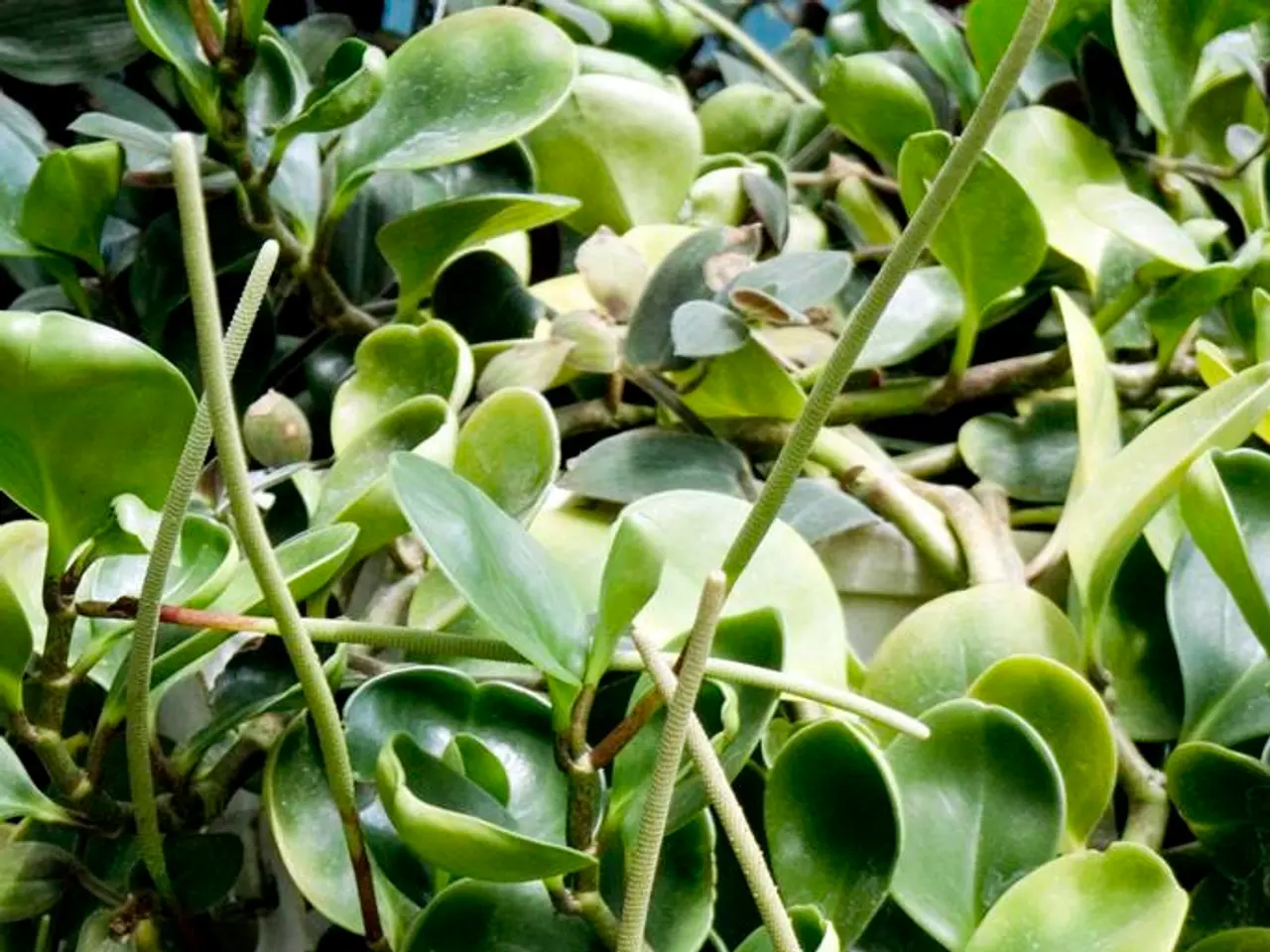Steps to Achieve Xeriscaping - Comprehensive Guide for a Water-Conserving Landscape Design
Ready to create a garden that's vibrant yet eco-friendly? Dreaming of a water bill that doesn't break the bank? Then you're in the right place! This step-by-step guide to xeriscaping will turn your outdoor space into a stunning, water-wise paradise, perfect for areas suffering from drought or just for those looking to cut down on water usage. Get ready to learn how to create a low-maintenance landscape that's as eye-catching as it is green!
First things first: Xeriscaping 101
Xeriscaping is a landscape design method aimed at water conservation, often used in dry or drought-prone areas. By using native or drought-tolerant plants, efficient irrigation, and smart planning, xeriscaping eliminates the need for constant watering, cuts down on maintenance, saves you money on water bills, and supports local ecosystems. The focus is on sustainability, not just on aesthetics!
Know your yard: The lay of the land
Before diving in, assess your garden's current conditions, including sun exposure, soil composition, slopes, and drainage issues. Understanding these factors helps you choose plants that will thrive, and the way water moves across your landscape. Keep in mind microclimates, as certain areas may receive more sunlight or retain more moisture than others. Conduct a soil test to determine pH and drainage capacity, as this will help customize your plant choices and soil amendments.
Designing with purpose: Plan your xeriscape
designing your xeriscape starts with mapping out zones for plants, pathways, and hardscape features. Group plants with similar water needs together to streamline irrigation, and don't forget to include focal points like rock gardens or native flower beds to add beauty and structure. Consider shaded areas, windbreaks using trees or shrubs, and how people will move through the space. Strive for a design that balances function, beauty, and water efficiency.
A healthy foundation: Soil matters
A strong, healthy foundation is key to any garden, and a xeriscape is no exception. Most drought-tolerant plants prefer soil that drains well but retains moisture. Achieve the perfect balance by adding compost, sand, or other organic materials to your soil. Compost enriches the soil with nutrients, while improving texture and water retention. If your native soil is naturally sandy or rocky, you may find it ideal for xeric plants. Regularly amending the soil helps maintain long-term garden health.
Plants: Natives are the way to go
Native plants naturally adapt to your local climate and require less water, making them ideal for xeriscaping. They are generally more resistant to pests and diseases, reducing the need for chemical treatments. Popular drought-tolerant choices include succulents, ornamental grasses, and aromatic herbs like lavender and sage. These hardy plants add color, texture, and biodiversity to your garden. Focus on choosing species that thrive in your region with minimal care.
The grass isn't always greener
Lawns require the most water of any landscape feature, so it's best to replace as much grassy area as possible with gravel, mulch, or low-water ground covers. If you need a small patch of grass, opt for drought-tolerant types like buffalo grass or bermudagrass. Or go the artificial route with turf for recreational areas that must remain green. Reducing lawn size can dramatically cut water usage and maintenance time.
Smart watering: Drip, drip, drip
Efficient irrigation systems are essential for xeriscaping success. Drip irrigation systems deliver water directly to plant roots, reducing evaporation and runoff. This system is ideal for garden beds, trees, and shrubs. Use timers and moisture sensors to avoid overwatering or underwatering, and adjust according to seasonal needs.
Deep and infrequent: Water right
Instead of frequent shallow watering, aim for deep, infrequent sessions that encourage strong root growth. Watering early in the morning reduces loss to evaporation, and keeps plants hydrated throughout the day. Monitor your plants and soil to fine-tune the schedule, adjusting for weather and seasonal changes, especially during extreme heat or rainfall.
Maximize moisture retention: Embrace mulch
A thick layer of mulch helps retain soil moisture, prevents weed growth and regulates temperature. Organic mulches like bark, straw, or wood chips gradually break down, enriching the soil. Mulching around plants reduces the need for frequent watering and shields roots from temperature extremes. Maintain mulch a few inches away from plant stems to prevent rot. Refresh mulch as needed, especially after storms or heavy winds.
Going Gorgeous: Add Hardscaping Elements
Hardscapes like patios, stepping stones, and decorative gravel reduce the area that needs watering. They add structure and functionality to your yard while enhancing aesthetics. Use permeable materials to allow rainwater to soak into the ground. Create pathways to define garden zones and improve usability while supporting a sustainable design.
Group plantings by plant needs
Hydrozoning is the practice of planting species with similar water needs together. This technique prevents over- or under-watering and simplifies your irrigation strategy. Place high-water plants in shadier or low-lying zones where moisture collects naturally. Use drought-tolerant species for sunny, dry spots. Keep thirsty plants closer to water sources or high-traffic areas. Smart grouping leads to healthier plants and greater water efficiency.
The slopes got it going on: Flatten or terrace
Steep slopes cause water runoff, leading to erosion and wasted moisture. Flattening areas or adding terraces helps slow water movement, allowing it to soak in and supports healthy root growth. Terraces can be built with stones, timber, or retaining walls for a structured look. Groundcovers and erosion-control plants stabilize soil on inclines.
Rainwater harvesting: Capture and reuse
Collecting rainwater in barrels or cisterns provides a free, eco-friendly water source for your garden. Position barrels under downspouts to maximize collection during rainy periods. Use the stored water to hydrate your plants during dry spells. Always cover barrels to prevent mosquito breeding and debris buildup. Installing a basic filter or spigot makes it easier to use the water efficiently.
Permeable paving: It's a win-win scenario
Permeable pavers allow water to seep through the surface and soak into the soil below, reducing runoff and helping recharge groundwater. These pavers come in various materials, including concrete, brick, and natural stone. They are ideal for walkways, driveways, and patios in xeriscape designs. Adding sand or gravel between the joints improves drainage. Permeable paving combines functionality with environmental benefits.
Strategic Shading: Beat the heat
Shade lowers temperatures, reduces evaporation, and protects delicate plants. Plant trees or tall shrubs on the south and west sides to block the hottest sun. Use pergolas, trellises, or shade sails to create cooling zones in your yard. Shade also extends the lifespan of mulch and reduces the frequency of watering. Choose trees that are drought-tolerant and low-maintenance. Thoughtful shading brings comfort and sustainability together.
Time for a fresh start: Pruning
Regular pruning keeps plants tidy and directs energy where it's needed. Remove dead, damaged, or overcrowded branches to promote airflow and sunlight. Proper pruning also reduces water needs by minimizing excess growth. Focus on shaping rather than heavy cutting to avoid plant stress. Use clean, sharp tools for precise and healthy cuts. A little maintenance goes a long way in a xeriscape.
Take it naturally: Pest control
Keep an eye on your garden and catch pests early using natural methods. Encourage ladybugs, birds, and other predators that eat harmful bugs. Use neem oil or insecticidal soap when necessary, avoiding harsh chemicals. Healthy plants in a balanced ecosystem are less prone to infestations. Rotate plant types seasonally to break pest cycles. Preventive care leads to a thriving garden with fewer problems.
Seasonal Color: Year-round Beauty
Choose plants with staggered bloom times for color year-round. Spring wildflowers, summer sages, and fall ornamental grasses provide visual interest. Evergreen shrubs and winter seed heads offer structure even in colder months. Plant in layers for added depth and texture across the seasons. Colorful gardens attract pollinators and brighten your space without excess water. Seasonal planning adds vibrancy to water-wise design.
Learn, adjust and adapt: A living process
Observing your garden and making changes as needed is essential to xeriscaping success. Some areas may need more mulch, others less water, or different plant varieties. Track your progress and keep notes for future improvements. Be patient-xeriscapes become more beautiful and efficient over time. Adapting your approach is part of the fun.
Family-friendly gardening: A team effort
Get the family involved in planning, planting, and maintaining the garden. Kids can help water, spread mulch, or decorate plant markers. This is a great way to teach sustainability and enjoy time outdoors together. Involve everyone in choosing plants and features to build pride and connection. Sharing the work makes it easier and more rewarding. A xeriscape becomes a shared space full of memories.
Consistent maintenance: Key to success!
Even low-maintenance gardens need regular care. Check irrigation systems, refresh mulch, and prune as needed. Weed regularly to keep your garden looking tidy and efficient. Walk your garden weekly to spot issues early. Keeping up with small tasks prevents big problems. Consistency keeps your xeriscape thriving for years to come.
A Garden That Grows with Purpose
Xeriscaping is more than just saving water: it's about creating a meaningful, eco-friendly space that reflects your care for the environment. With thoughtful planning and a little creativity, you can design a garden that's as sustainable as it is stunning. Follow these steps and embrace this eco-friendly approach to landscaping. Your water-wise oasis awaits!
- By using native or drought-tolerant plants, efficient irrigation, and smart planning for your xeriscape, you can not only eliminate the need for constant watering but also support local ecosystems, cut down on maintenance, and contribute to sustainable living.
- When designing your xeriscape, group plants with similar water needs together, and remember to include hardscape features like rock gardens or native flower beds to add beauty and structure, while balancing function, aesthetics, and water efficiency.








